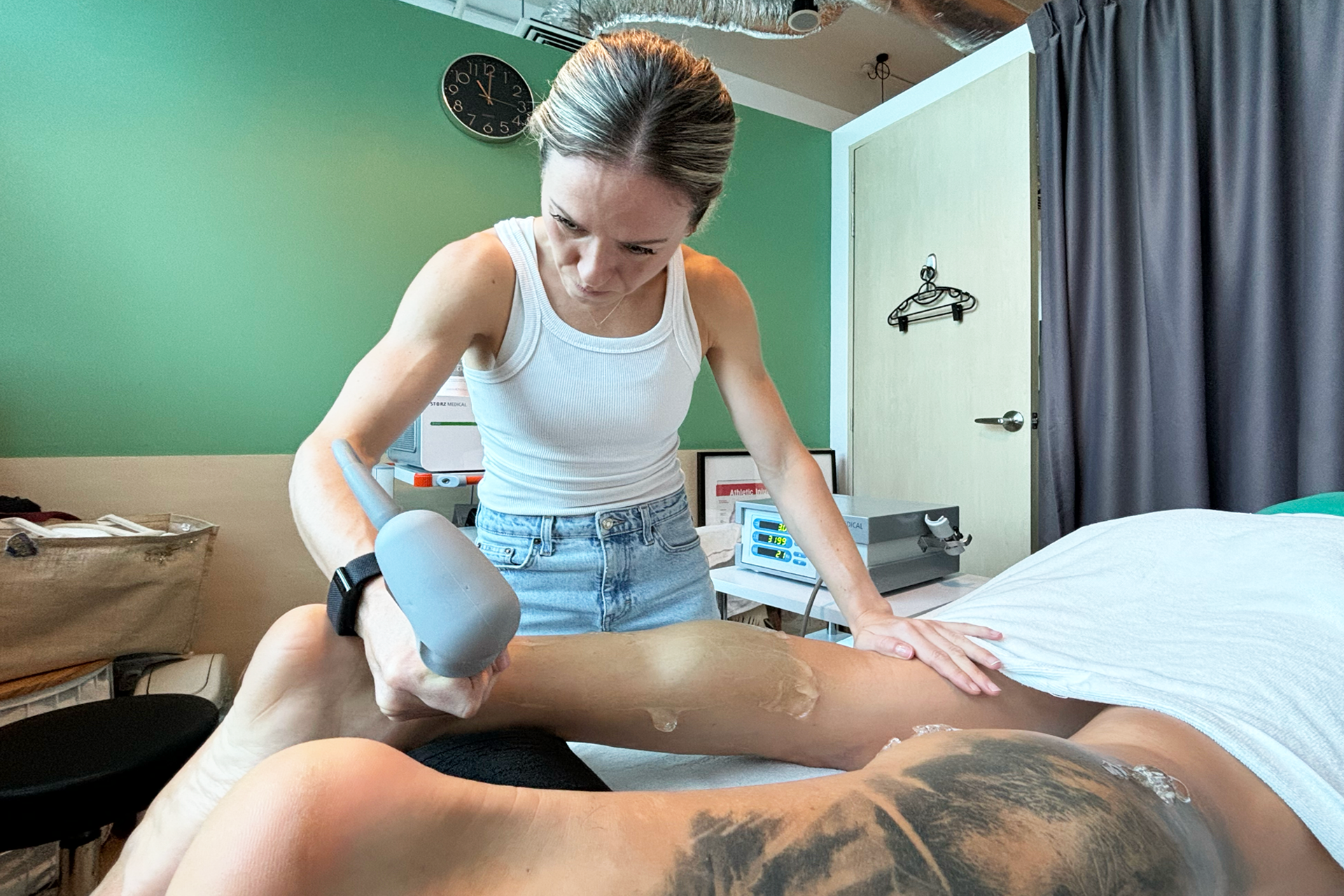Introduction to Achilles Tendon Rupture
An Achilles tendon rupture is a serious injury where the tendon that connects your calf muscles to your heel bone is completely or partially torn. The incidence of Achilles tendon ruptures varies depending on age, activity level and underlying health conditions. It can occur suddenly during high-impact activities, such as sprinting or jumping, often due to sudden forced plantar flexion, or it can develop gradually over time as a result of chronic degeneration.
Achilles tendon rupture injuries are not only common among athletes but can also happen to anyone, especially those with underlying tendon issues or risk factors, such as previous injuries to the Achilles tendon. Early diagnosis, which should include a thorough medical history and proper treatment, is crucial to prevent long-term disability and full function.
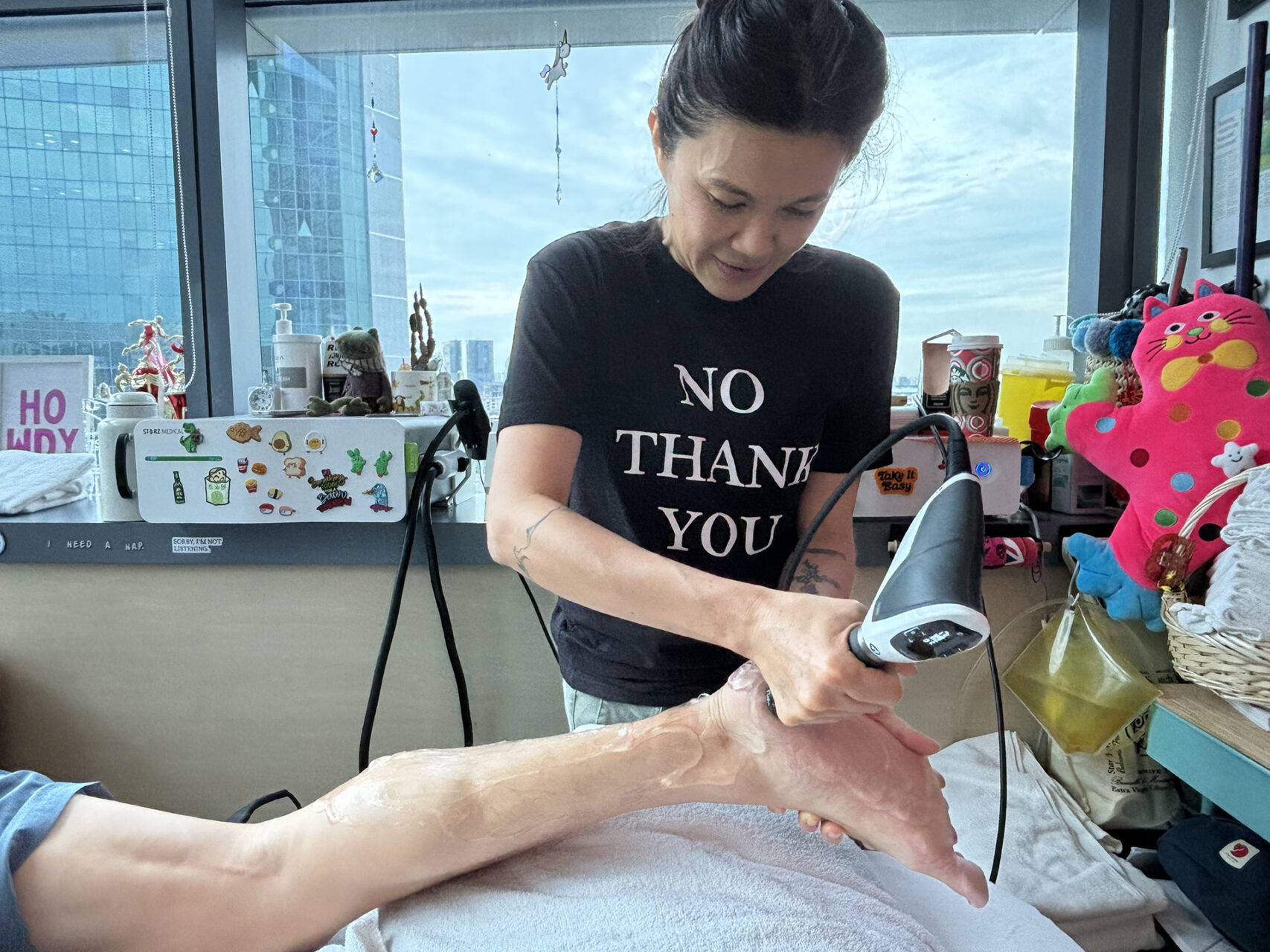
Anatomy and Function of the Achilles Tendon
The Achilles tendon is the strongest tendon in the body, yet it’s vulnerable to injury due to its high load-bearing role. It connects the calf muscles (gastrocnemius and soleus) to the heel bone, allowing for movements such as walking, running and jumping. The calf muscle generates the force for these movements and transmits it through the Achilles tendon. It acts as a powerful lever during push-off and absorbs a lot of force during landing.
The foot and ankle work together with the Achilles tendon to enable a wide range of movements. However, its limited blood supply makes healing slower, and the integrity of the surrounding soft tissue is also crucial for overall function and the healing process. Therefore, injuries such as an Achilles tendon rupture require careful management to ensure a full recovery.
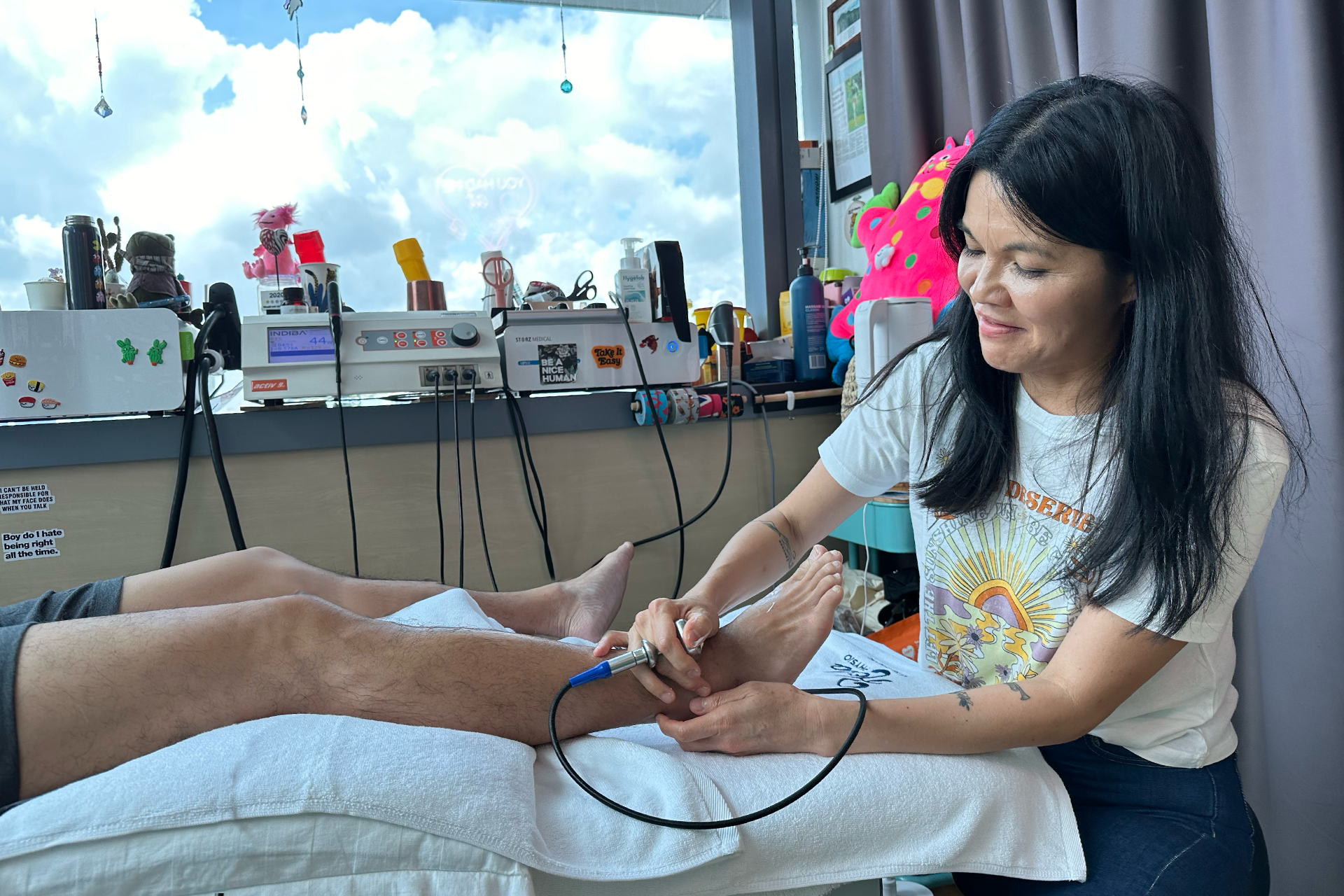
Tendon Injury and Healing
When an Achilles tendon rupture happens, the injury disrupts the tendon’s blood supply and causes inflammation and the development of fibrous tissue as the body tries to repair itself. This healing process is gradual and takes several months as the tendon slowly regains its strength and flexibility.
During this time, it’s important to avoid activities that can exacerbate the tendon injury, such as sudden stretching or putting excessive weight on the affected leg. Physical therapy plays a significant role in guiding safe movement and promoting optimal healing while also reducing the risk of a re-rupture.
A well-managed rehabilitation program, including bracing and pain management, supports the formation of healthy tissue and helps restore the tendon’s function over time.
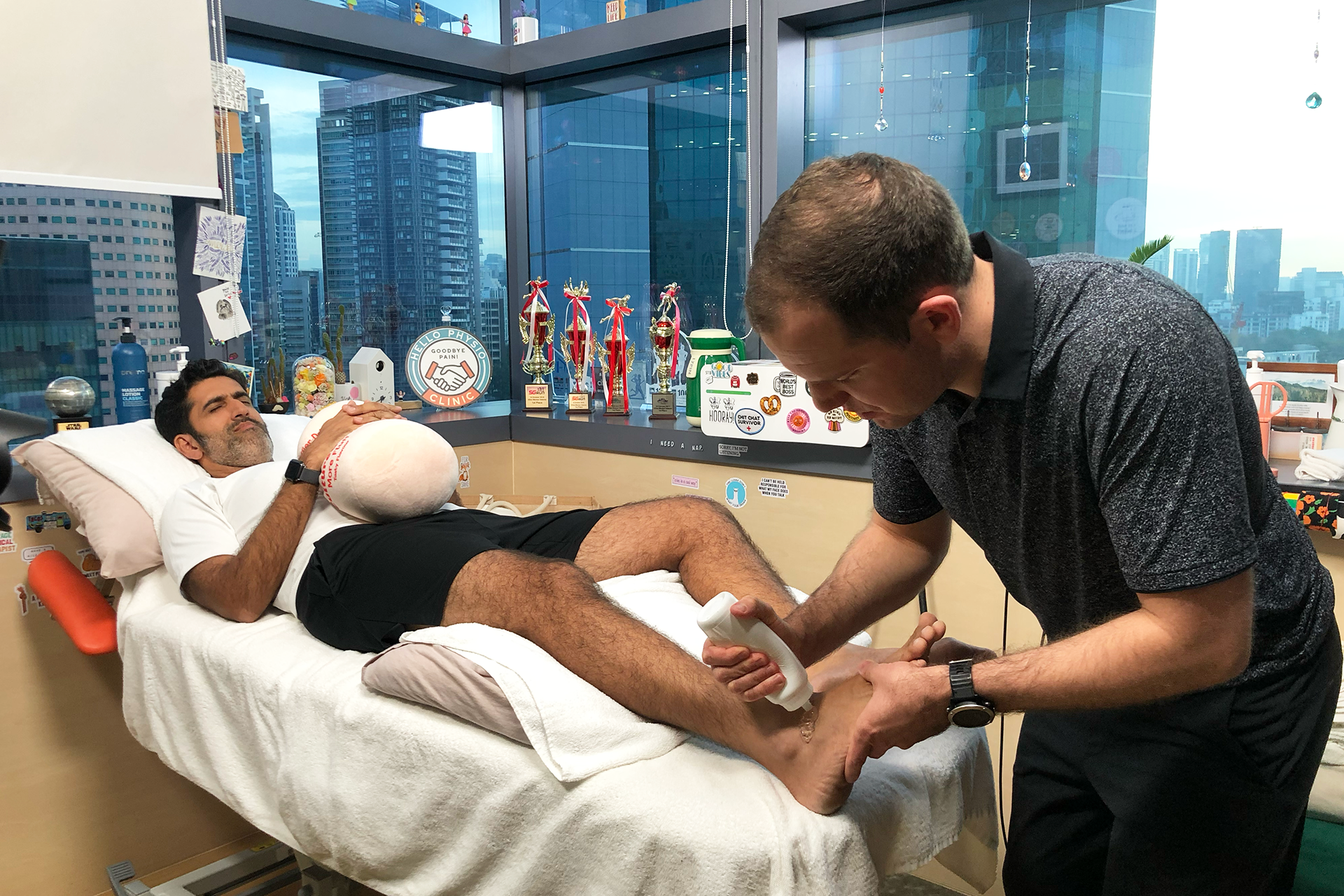
What Causes Achilles Tendon Rupture
An Achilles tendon rupture is usually caused by a sudden, forceful push-off or overstretching of the tendon, often during explosive sports movements, or after chronic degeneration. Achilles tendon injuries range from tendinopathy to a complete rupture. Achilles tendon problems can develop gradually due to overuse or improper training. Prevention strategies, such as proper warm-ups, strengthening exercises, and wearing appropriate footwear, are key to avoiding Achilles tendon problems.
An acute Achilles tendon rupture happens when the tendon is stretched beyond its capacity. Ruptures usually happen during activities that involve sudden force or unexpected stress on the tendon. Movements, such as jumping for a ball or pushing off for a sprint, are common triggers for these symptoms. A traumatic injury like a direct blow or fall can also cause a rupture. Overuse from repetitive strain, especially in individuals with Achilles tendinopathy, can gradually weaken the tendon, making it more prone to tearing over time.
Chronic injuries can predispose the tendon to rupture. Poor conditioning, weak calf muscles, tight Achilles tendons, and biomechanical issues such as flat feet also increase the risk. Additional factors include age (30-50), male gender, previous tendon injuries, and certain medications, such as fluoroquinolone antibiotics or corticosteroid injections, as well as steroid injections, which can weaken the tendon.
Achilles tendon tears and torn tendons are related conditions that may require similar management. Acute ruptures (sudden onset) differ from chronic ruptures (long-standing or neglected injuries) in their presentation and treatment approach.
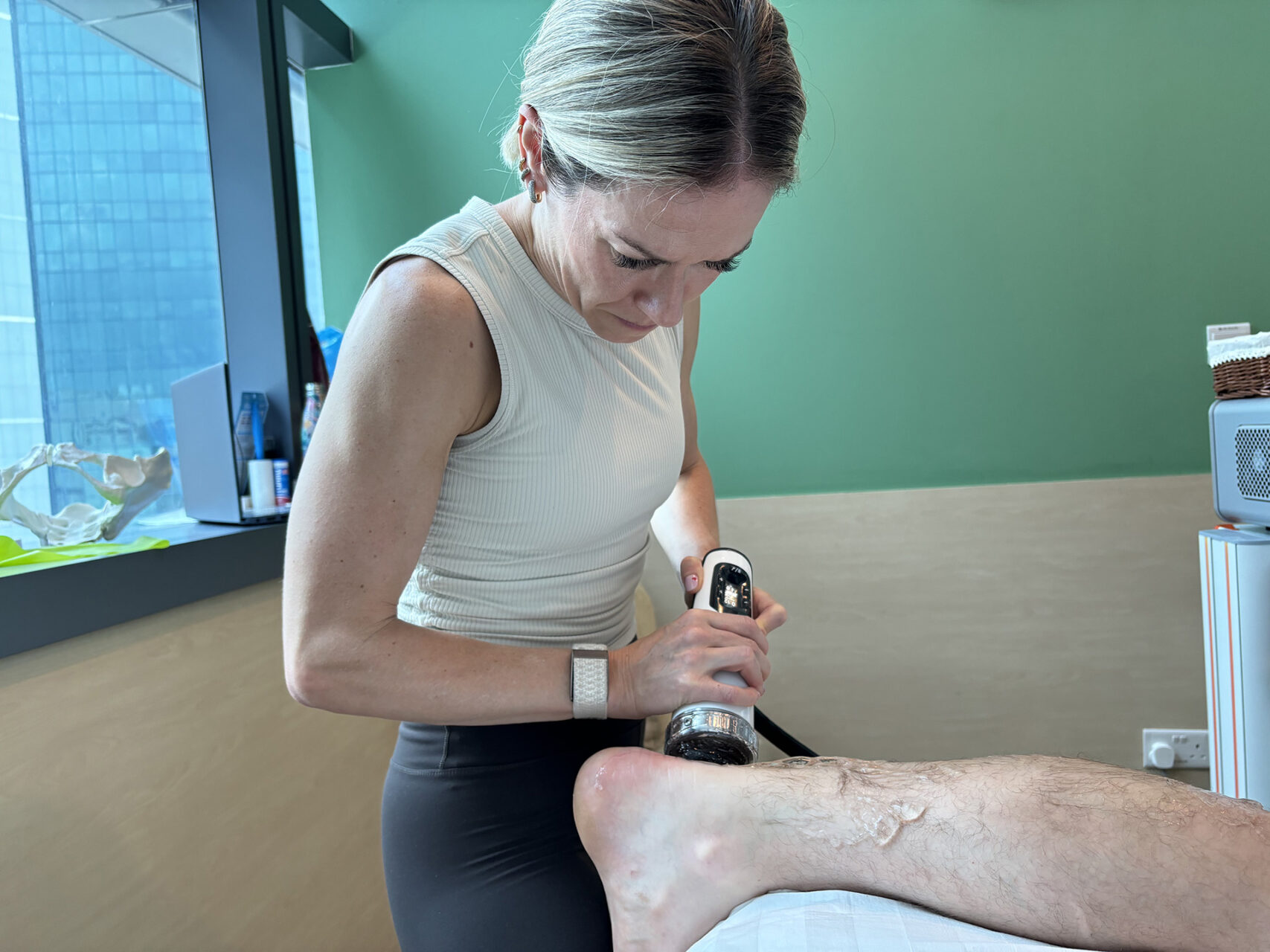
Symptoms of Achilles Tendon Rupture
Common symptoms of an Achilles tendon rupture include sudden, sharp pain in the back of the ankle or calf, an audible “pop” at the time of injury, swelling, and difficulty pushing off or walking normally. It’s like the feeling of being kicked or struck in the leg. Walking becomes difficult, and the injured foot may feel weak or unstable, often making it impossible to push off. Swelling or bruising above the heel is common, and in a complete rupture, a gap may be felt in the tendon. Recognising these Achilles tendon rupture symptoms early helps in faster and full recovery.
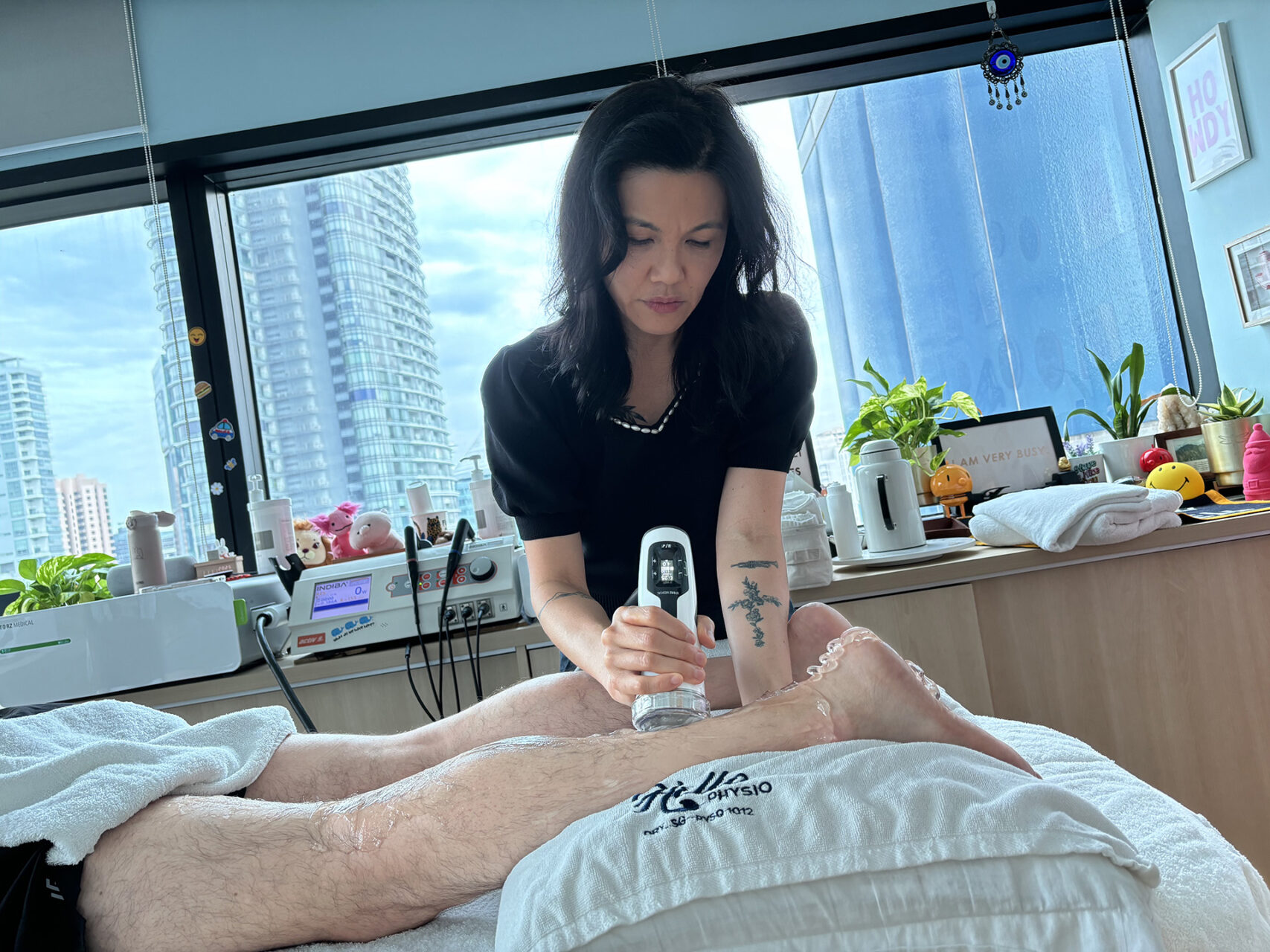
Diagnosis of Achilles Tendon Rupture
Diagnosis of an Achilles tendon rupture starts with a thorough history and physical examination, which is crucial in assessing swelling, tenderness and limitations in movement. The Thompson test, performed with the patient in a prone position, involves squeezing the calf to determine ankle plantarflexion and evaluate tendon integrity, making it a reliable clinical tool. Imaging may be used to confirm the diagnosis. Ultrasound provides real-time visualisation of the tendon, while an MRI offers a detailed assessment to differentiate between a partial and complete rupture. Differentiating these is important as it guides whether surgery or conservative management is most appropriate.
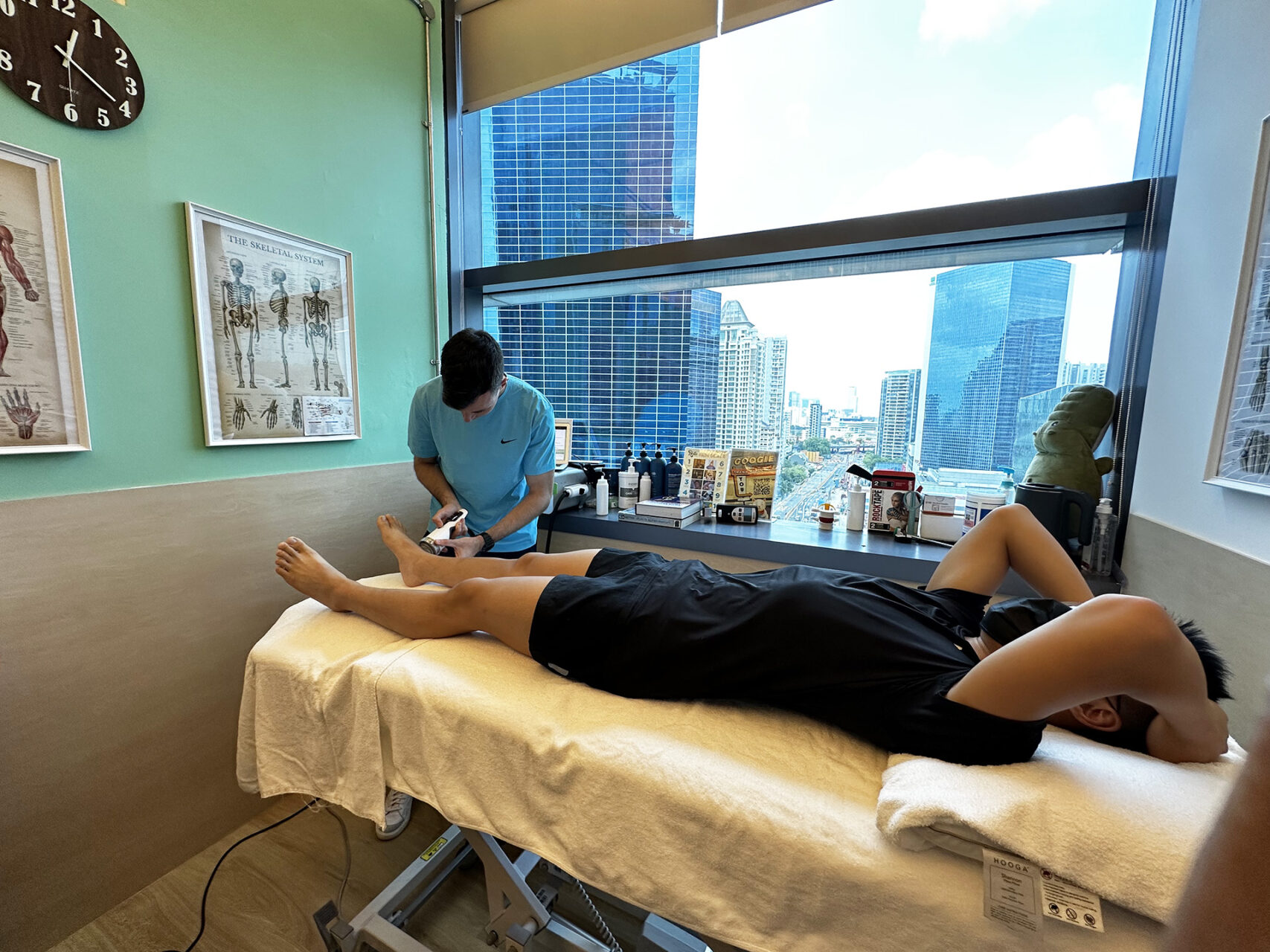
Treatment for Achilles Tendon Rupture
Non-Surgical Management
The non-surgical treatment, also known as conservative treatment, for Achilles tendon rupture involves immobilising the foot in a plantarflexed position using a cast, walking boot, or brace. Functional bracing is a key component of conservative treatment, as it allows for early mobility and weight-bearing during the healing process, which can lead to similar outcomes as surgery without the associated risks. This approach is recommended for partial ruptures, less active patients or those with a higher surgical risk. Functional rehabilitation protocols involving early controlled movement are crucial to optimise healing and reduce stiffness.
Achilles Tendon Rupture Surgery
Achilles tendon rupture surgery is recommended for active individuals, athletes, or those with a complete rupture, where optimal tendon strength is required for a return to sport. Surgery is done to reattach the torn tendon and restore function. Surgical repair can be done using open or minimally invasive surgery techniques. Minimally invasive surgery involves smaller incisions and less tissue disruption, which may reduce the risk of wound complications and nerve injury compared to open repair. The choice depends on the tendon condition, the patient’s activity level and the surgeon’s expertise. Post-operative care focuses on protecting the repair while gradually introducing load. Surgery reduces the re-rupture rate compared to conservative care but carries risks of wound healing problems or infection.
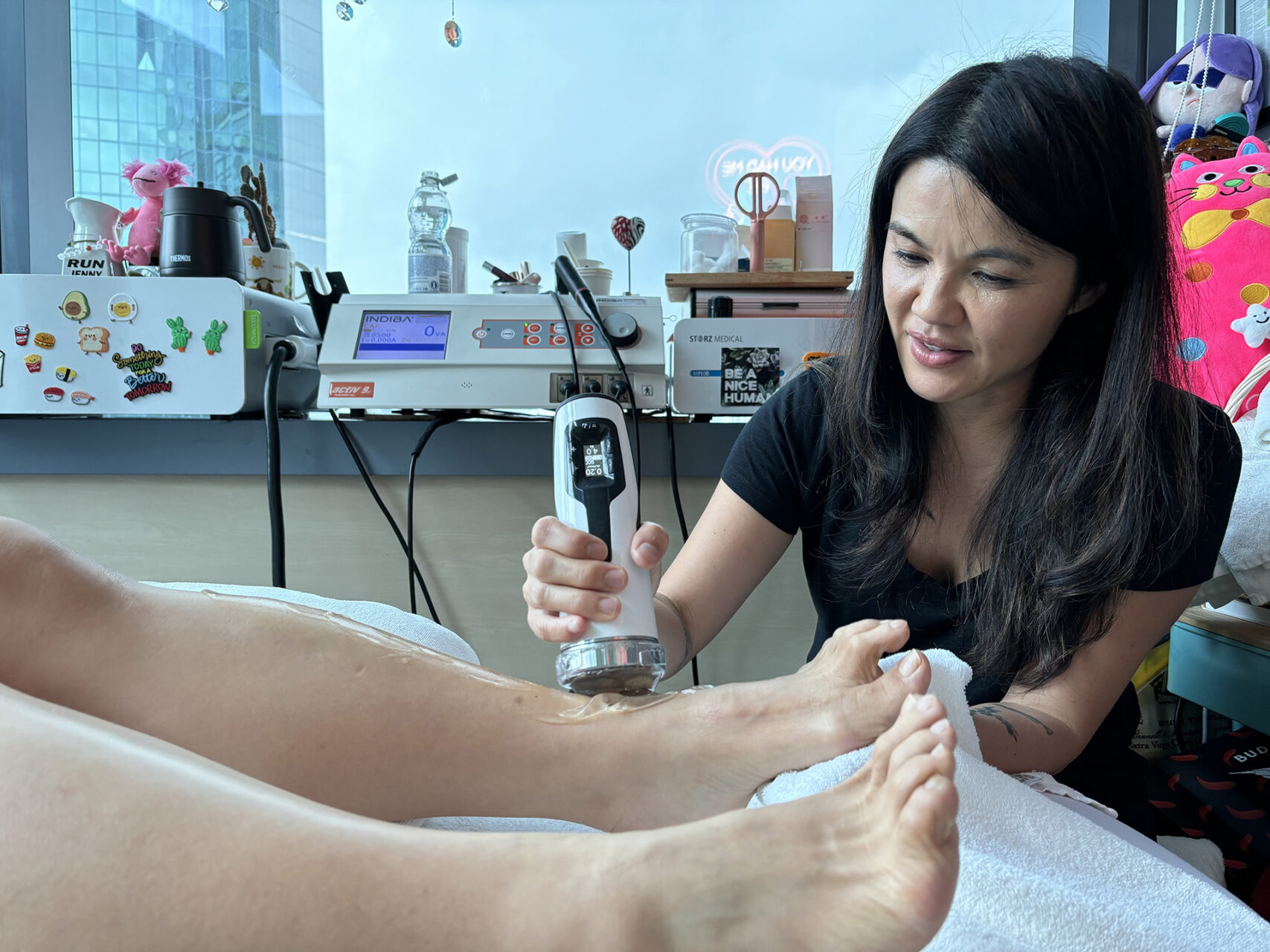
Rehabilitation and Achilles Tendon Rupture Surgery Recovery
Good Achilles tendon rupture surgery recovery requires a structured rehabilitation. Physiotherapy starts early to maintain mobility in adjacent joints and prevent muscle wasting. Progressive loading exercises, starting with gentle range-of-motion exercises and progressing to strength training, help restore tendon resilience. It’s essential to incorporate exercises that strengthen the calf muscles, such as squats and jumping rope, to facilitate optimal recovery and support the Achilles tendon. Hip and core strength should also be addressed to improve gait mechanics and prevent re-injury.
Adjunctive modalities play a significant role in enhancing recovery and providing Achilles tendon rupture pain relief:
- Shockwave Therapy stimulates tendon healing in stubborn cases by promoting new blood vessel growth and reducing scar tissue.
- INDIBA® Activ Therapy increases circulation, accelerates cellular repair and reduces inflammation.
- Electromagnetic Transduction Therapy (EMTT) promotes tissue regeneration at the cellular level, improves tendon strength and reduces Achilles tendon rupture pain.
Exercise interventions include calf stretch routines to improve flexibility and reduce the risk of re-injury. These treatments, combined with targeted Achilles tendon rupture rehab, can shorten recovery time and improve long-term outcomes.
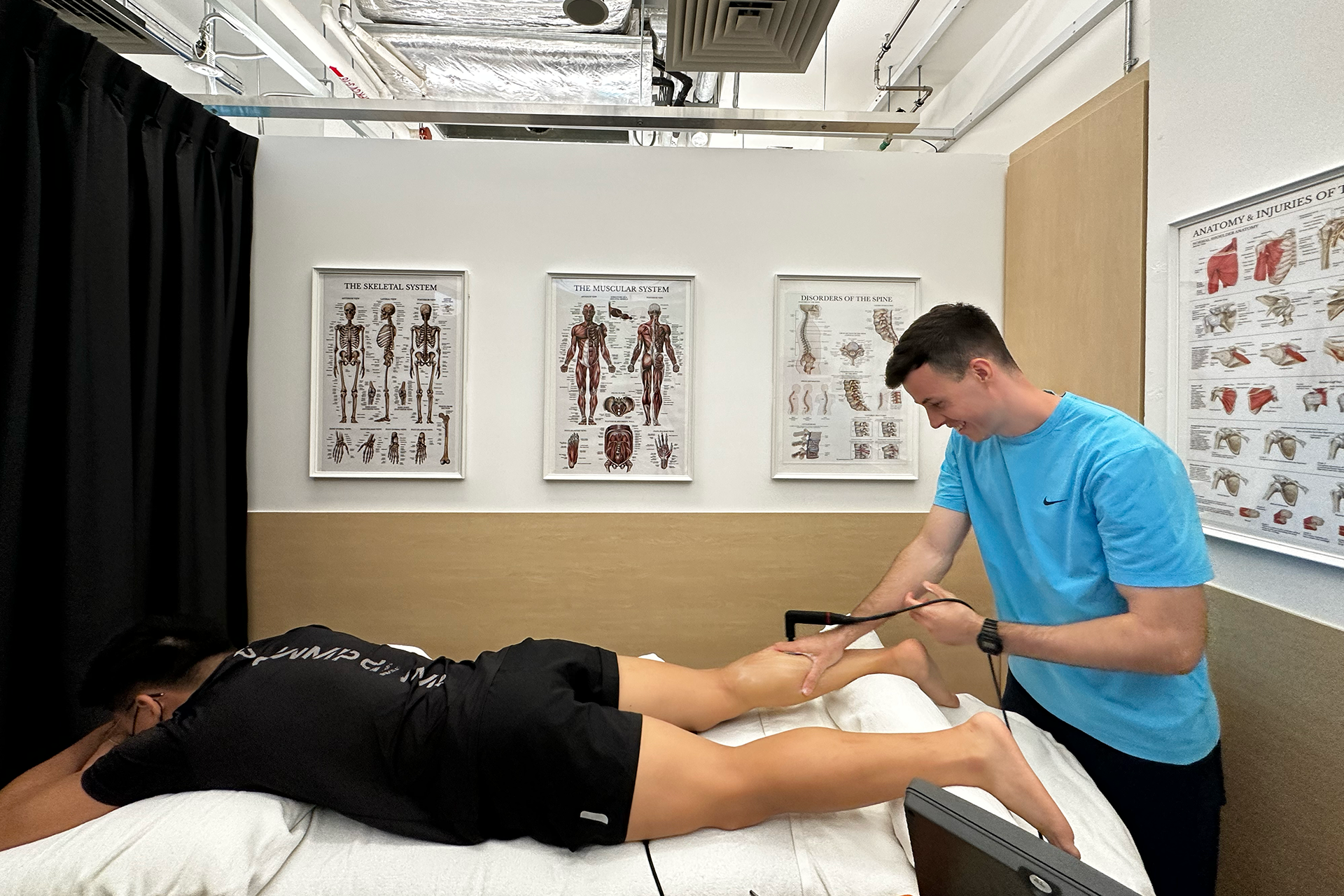
Achilles Tendon Rupture Recovery Time with Surgery
Achilles tendon rupture recovery time with surgery can be significantly improved with an integrated rehabilitation program that combines advanced modalities and progressive loading. While recovery still depends on factors such as injury severity, patient age, adherence to rehabilitation, and the use of INDIBA, Shockwave Therapy, and Electromagnetic Transduction Therapy (EMTT), can accelerate tissue repair, improve circulation, and reduce inflammation, allowing for earlier and safer loading of the tendon. When combined with LightSpeed Lift body-weight support systems, patients can begin functional movement training sooner, maintain cardiovascular fitness, and promote neuromuscular re-education without overloading the healing Achilles tendon.
With this approach, light functional activities may be introduced as early as 8 to 10 weeks post-surgery, with controlled running progression often starting between 4 and 5 months. Many patients can return to non-contact sports in 6 to 8 months and competitive play between 8 and 10 months.
Non-surgical cases, when following the same advanced rehab strategies, may achieve functional recovery in 4 to 5 months, though peak tendon strength will develop over 9 to 12 months. Continued physiotherapy, strength conditioning, and maintenance exercises remain essential to minimise stiffness, restore full power, and reduce the risk of re-injury well beyond the initial return-to-sport phase.
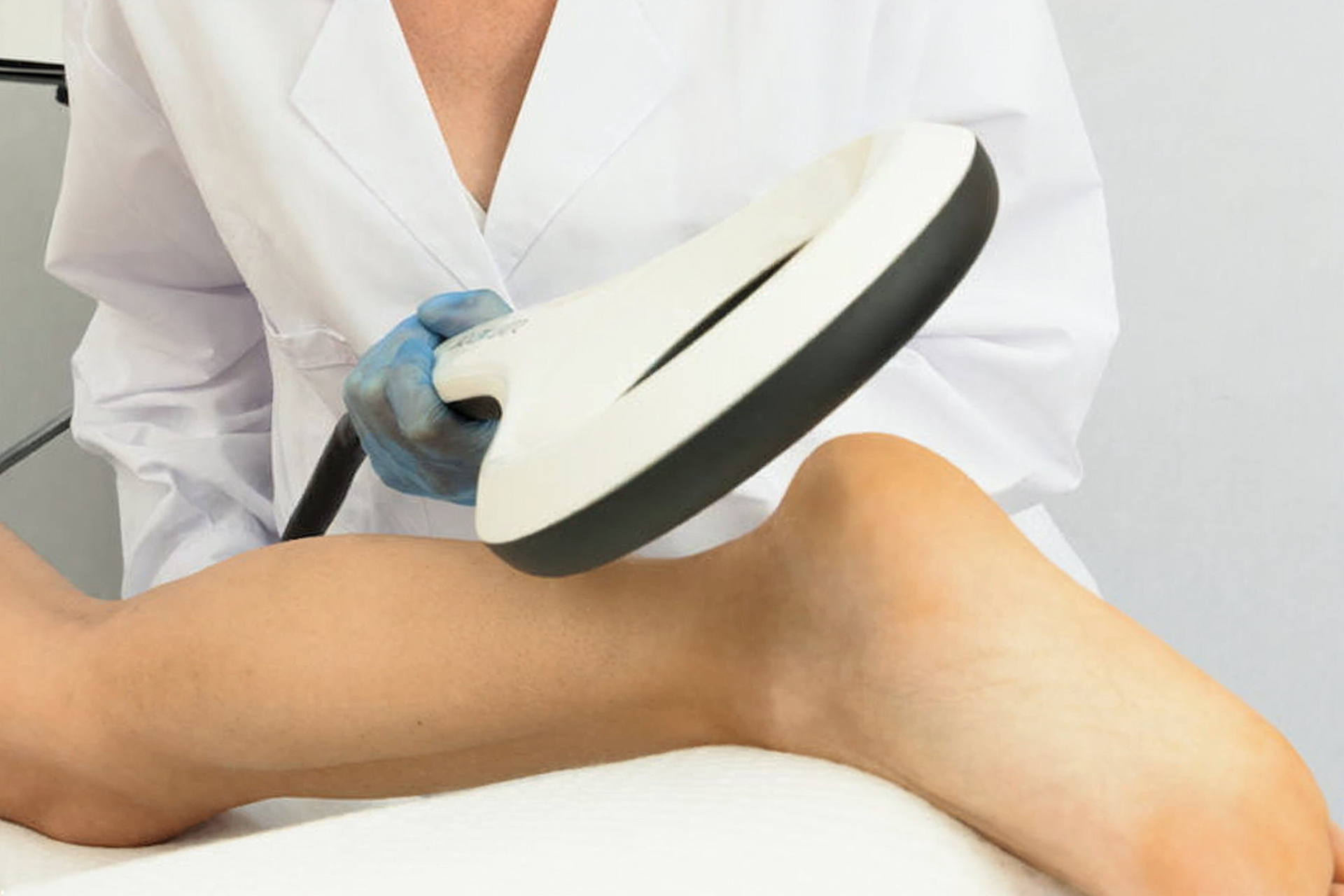
How to Prevent Achilles Tendon Rupture
Preventing an Achilles tendon rupture starts with gradual training progressions, especially for sports that involve jumping, sprinting or rapid directional changes. Regular calf and Achilles stretching and strengthening keep the tendons supple and resilient. Avoid sudden increases in intensity or volume, and always warm up before exercise. Proper footwear with adequate heel cushioning can reduce tendon strain, especially for those with biomechanical risk factors.
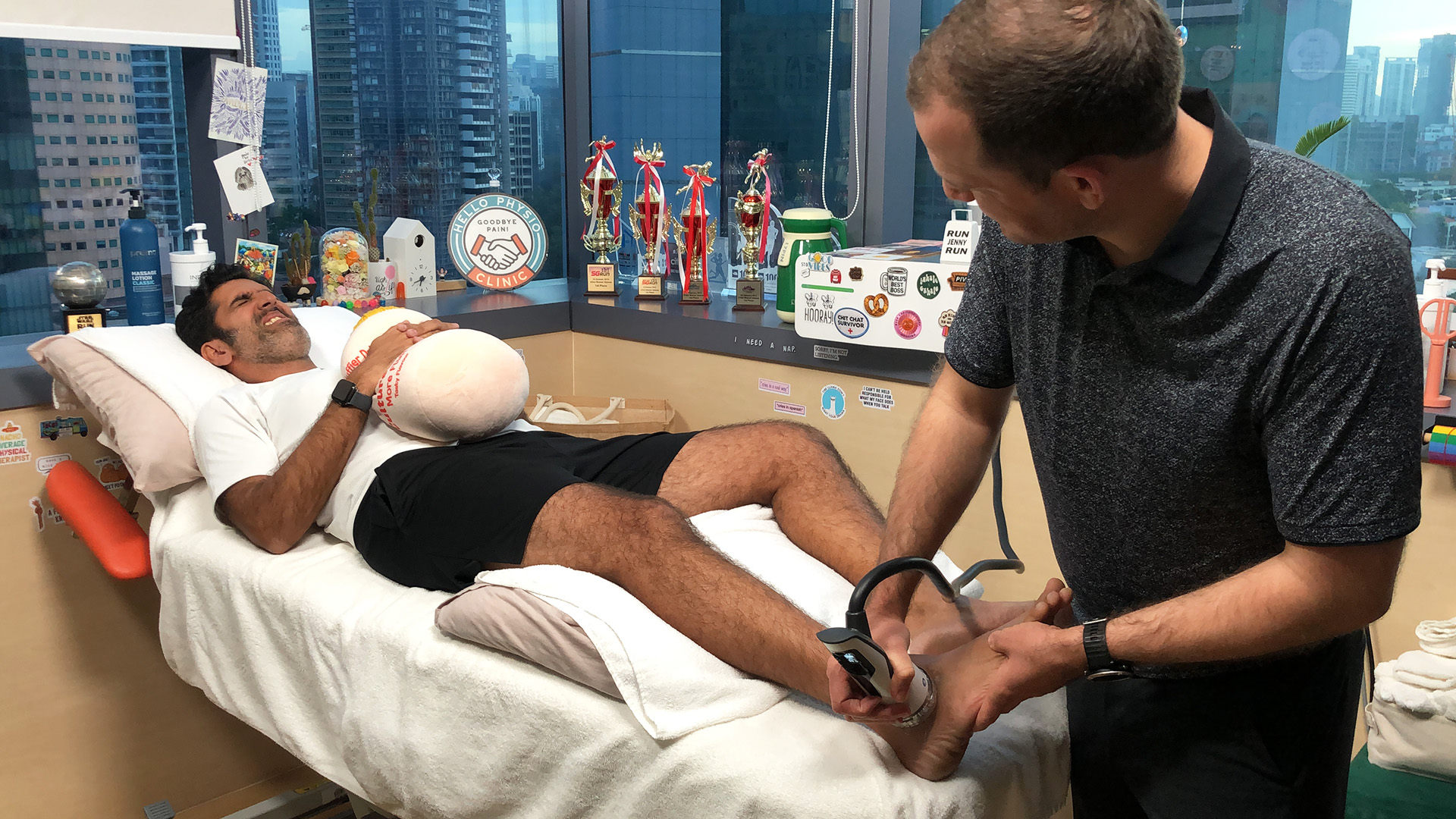
When to See a Physiotherapist
Seek urgent care if you experience sudden, severe Achilles tendon rupture pain, hear a “pop” in your ankle or calf or find it difficult to walk or push off your foot. Visible swelling or a gap in the tendon area also warrants immediate assessment.
From managing pain relief in the early stages of Achilles tendon rupture to guiding you through Achilles tendon rupture surgery recovery, our physiotherapists combine advanced modalities, such as Shockwave Therapy, INDIBA and EMTT, with progressive exercise programs to restore strength and mobility. Book a consultation with HelloPhysio today and start your journey to a complete and lasting recovery.

